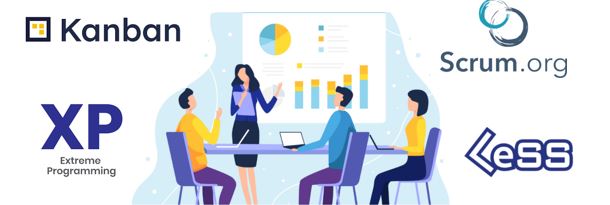AGILE – SAILBOAT RETROSPECTIVE
AGILITY – SAILBOAT RETROSPECTIVE Mastering the sailboat retrospective Sailboat Retrospective is a fun and easy way to boost the communication of what went well and what slowed the team during current sprint. Based on the topics addressed during the retrospective, the team agrees on the improvement activities needed for future sprint. It is an engaging way for your team to honestly evaluate your previous sprint and figure out the best way forward Sailboat Retrospective – details The tropical island represents the set sprint goal they have aimed to achieve in their daily work during the sprint.The Wind represents everything helping them to achieve the sprint goal, pushing the team’s sails boat to go even faster.The Sun represents all the things making them feel good and happy during work. As a retrospective is a time for team celebration this is a highly appreciated topic to bring up and an opportunity to bring forward kudos to your team friends.The Anchor on the Sailing boat represents everything that is slowing us down an holding us back on the journey towards the sprint goal.The Reef represents potential risks ahead that we see will jeopardize future sprint work. The steps to a sailboat retrospective This sailboat metaphor makes for an enlightening sprint retrospective. But, how can you implement the sailboat technique on your own team? Start by opening a sailboat retrospective template on your Miro board. You’ll see a sailboat image, a patch of land, a waterline, rocks, and an anchor below the boat. Here’s one we love by Miro user Johanna Tortensson. Next, gather your team and equip them with some digital sticky notes in Miro to use during the retro. You can even add their names as tags to the stickies so they know which ones are designated for them. With everything in place, it’s time for your team to brainstorm their answers to the following questions with regard to your last sprint: What risks did the sprint face? What delayed the sprint? What propelled the sprint forward? Team members will jot their answers to those questions down on individual sticky notes and place them on the appropriate spot on your picture of a sailboat. Then, similar themes can be grouped together and your team can discuss their findings and vote on what action items they’ll use to improve the next sprint. Set the stage – start the Retrospective by introducing the team of the sailboat metaphor. Reflect and write individually – Give each team member 7 min to individually write down stickies on the board in the different areas of the sailboat canvas. Present and discuss in pairs – Have breakout sessions with 2 (or 3) persons in each breakout room where they present their stickies to each other. Summarize – Each pair summarize the discussion during breakout so all team members can hear what has been discussed. Opportunity to ask questions if any. Group stickies – In case of more than one sticky with the same topics the team agrees upon grouping them together. Voting – Time for team voting on the topic(s) that needs focus going forward. It could be topics helping the team go forward so they need continue with these to keep momentum, or topics related to what is slowing them down or potential risks coming up. Find Actions – Based on the highest voted topic(s) the teams agree on improvement action going forward in the next sprint. Why the sailboat is such a useful retrospective With a sailboat retrospective, your team is bound to uncover a lot of valuable information – some of which might not be meant for everybody’s eyes. If you complete this sailboat exercise on a traditional whiteboard, you’ll need to remove all of your findings at the end of the retrospective meeting or store your board somewhere safe. And, even further, if some of your team members are remote, there’s no way for them to access that information if and when they need it. That’s why it’s better to use a virtual, collaborative whiteboard like Miro. You can use all of your favorite retrospective games and techniques, and your team (no matter where they are!) will be able to actively participate and easily refer back to that information later.
AGILE – SAILBOAT RETROSPECTIVE Read More »





